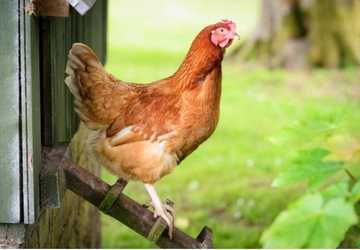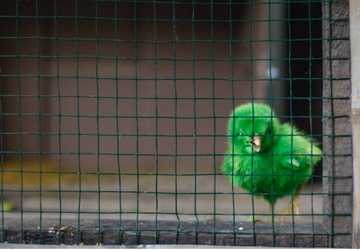Fostering an inviolate milieu for avian companions is paramount for their holistic well-being and euphoric existence. Birds are delicate creatures, and ensuring their safety within the domicile can preclude numerous health complications and assure a protracted, blissful existence.
Selecting the Ideal Cage
Appropriate Dimensions
A suitable cage is the cornerstone of a safe environment for pet birds. Ensure the cage is sufficiently extensive for your bird to manoeuvre freely, extend its wings, and engage in play. The cage bars should be spaced appropriately to forestall your bird from escaping or becoming ensnared.
Materials and Design
Opt for a cage fabricated from non-toxic materials. Eschew cages containing lead or zinc can be detrimental if ingested. Prefer stainless steel or powder-coated cages, which are more secure options. The design should include secure locks to prevent accidental escapes.
Optimal Placement
Avoiding Drafts and Direct Sunlight. Situate the cage away from drafts and direct sunlight. Birds are sensitive to temperature fluctuations, and both extremes can be dangerous. Ensure the cage is in a stable thermal milieu.
Safe and Tranquil Location

The cage should be placed in a secure, tranquil location where the bird can interact with the household without being overwhelmed by constant noise. A high-traffic area can induce stress in birds, so select a serene spot for creating a bird-safe home.
Safe Toys and Accessories
Non-Toxic Toys
Providing toys is essential, but ensure they are non-toxic and secure for your bird. Avoid toys with diminutive components that can be ingested. Bird safety tips include routinely scrutinizing toys for wear and tear to avert mishaps.
Perches and Climbing Structures
Utilize natural wood perches and climbing structures. Avoid sandpaper-covered perches, as they can cause podiatric injuries. Various sizes and textures of perches help maintain your bird's foot health and are pivotal in creating a bird-safe home.
Safe Diet and Water
Fresh and Nutritious Food
Proffer a balanced diet of seeds, pellets, and fresh fruits and vegetables. Abstain from providing your avian companions with substances such as chocolate, caffeine, alcohol, or avocado, as these harm their health. A cardinal aspect of ensuring a secure habitat for pet birds encompasses the daily provision of fresh, uncontaminated water.
Avoiding Contaminants
Employ stainless steel or ceramic bowls for food and water, as plastic can harbour bacteria. Clean bowls daily to maintain hygiene and prevent the proliferation of pathogens.
Household Hazards
Toxic Plants and Fumes
Numerous household plants are toxic to birds. Keep plants like lilies, philodendrons, and poinsettias out of reach. Also, avoid using non-stick cookware, as the fumes can kill birds. Ensuring a safe environment for pet birds necessitates vigilance regarding household toxins.
Electrical Cords and Open Water
Avians possess the propensity to gnaw on electrical conduits, a practice that is fraught with peril. Utilize cord covers or keep cords out of reach. Additionally, ensure no open water sources, such as uncovered aquariums or sinks, where your bird could inadvertently fall in.
Supervised Out-of-Cage Time
Safe Play Area
When permitting your bird out of its cage, create a designated play area devoid of hazards. Always supervise your bird to prevent accidents and ensure its safety.
Window and Mirror Safety
Avians are susceptible to sustaining injuries through collisions with windows or mirrors, as they often fail to perceive these barriers. Use decals or curtains to make these surfaces perceptible to your bird. This is an imperative step in creating a bird-safe home.
Regular Health Checks
Vet Visits
Regular vet visits are essential for monitoring your bird's health. A professional can provide bird safety tips for your species and needs.
Observing Behavior
Scrutinize your bird's behavior and appearance. Any deviations may signal underlying health complications. A swift reaction to indications of malaise can critically influence the welfare of your avian companion.
Environmental Enrichment
Mental Stimulation
Provide mental stimulation through toys, puzzles, and interaction. A bored bird can develop destructive behaviors. Keeping them mentally engaged is essential for ensuring a safe environment for pet birds.
Societal Interlocution and Avian Congeniality
Avians manifest as inherently gregarious entities, compelling requisite engagement with their anthropogenic cohorts. Allocate temporal segments for discourse, recreational activities, and the establishment of robust emotional connections with your avian on a quotidian basis. Such interchanges are quintessential for constructing an avian-secure habitation wherein your feathered companion perceives a profound sense of protection and affection.
Sanitation and Immaculateness

Pristine Habitational Zone:
Continuously sterilize the enclosure, perching structures, and amusement apparatus to prevent the proliferation of microbial and mycotic contaminants. Maintaining a spotless milieu is an essential element in edifying an avian-secure domicile.
Safe Cleaning Products:
Use bird-safe cleaning products. Many household cleaners contain chemicals that are harmful to birds. Opt for natural or bird-specific cleaning solutions.
Emergency Preparedness
First Aid Kit
Possess a bird-specific first aid kit. Include items like styptic powder, antiseptic wipes, and bandages. Knowing how to handle minor injuries is part of maintaining a safe environment for pet birds.
Emergency Contacts
Keep available contact information for an avian vet and a local animal emergency clinic. Quick access to professional help is crucial in emergencies.
Air Quality and Ventilation
Ensuring Fresh Air Circulation
Adequate ventilation is paramount in sustaining a safe environment for pet birds. Utilize HEPA air purifiers to eradicate airborne particulates and toxins. Circumvent positioning the cage near HVAC systems, as abrupt thermal variations can be harmful.
Avoiding Chemical Exposure
Exercise prudence when using cleaning agents, fragrances, and aerosols. Many contain volatile organic compounds (VOCs) that are harmful to avian species. Opt for hypoallergenic or avian-safe alternatives to uphold a safe environment for pet birds.
Lighting and Day-Night Cycles
Natural Light Exposure
Ensure your avian companion can access natural photic exposure, which is indispensable for their physiological homeostasis and circadian rhythms. Position the cage proximal to a fenestration but shielded from direct insolation to prevent hyperthermia.
Artificial Lighting
In the absence of adequate natural light, employ full-spectrum illumination to replicate solar radiation. This facilitates the maintenance of your bird's endocrine and metabolic functions. Proper lighting is integral in creating a bird-safe home.
Noise Control
Minimizing Loud Noises
Avian creatures possess acute auditory sensitivity and can be easily perturbed by cacophonous or abrupt sounds. Position the cage in a quiescent locale, distant from auditory disturbances such as televisions or speakers. This is a pivotal aspect of bird safety tips.
Soothing Sounds
Introduce soft, melodic music or natural soundscapes to foster a tranquil environment. This can mitigate stress and engender a sense of security, contributing to creating a bird-safe home.
Interaction and Socialization
Regular Human Interaction
Birds are inherently gregarious and necessitate regular interaction with their human custodians. Devote ample time to conversing, playing, and engaging with your bird to fortify your bond and ensure their psychological well-being.
Introducing Other Birds
If cohabiting multiple birds, ensure meticulous introduction protocols to avert altercations. Supervised interactions can facilitate the development of a harmonious coexistence, which is integral to creating a bird-safe home.
Conclusion
Adhering to these bird safety tips ensures your feathered companion enjoys a safe environment for pet birds. Remember, creating a bird-safe home is a continuous process that demands vigilance, care, and abundant affection.
